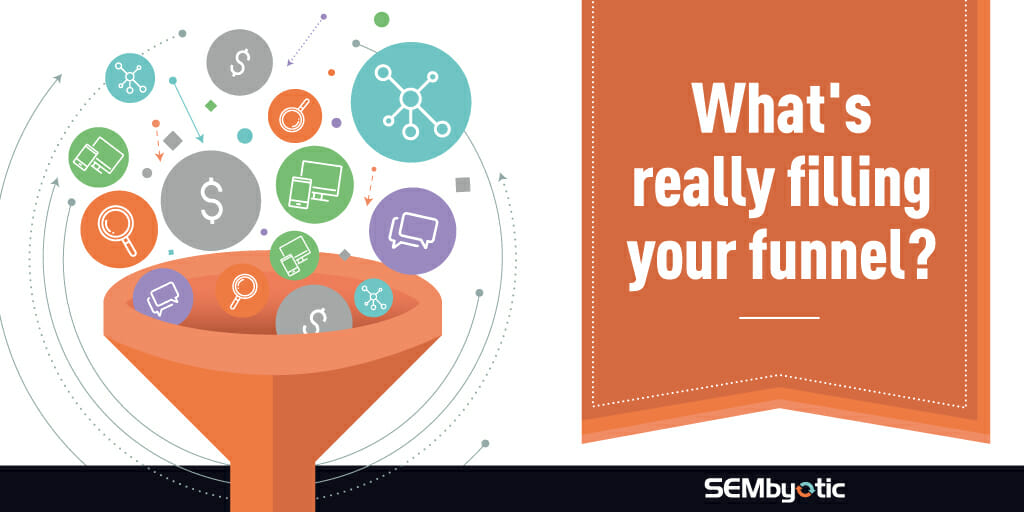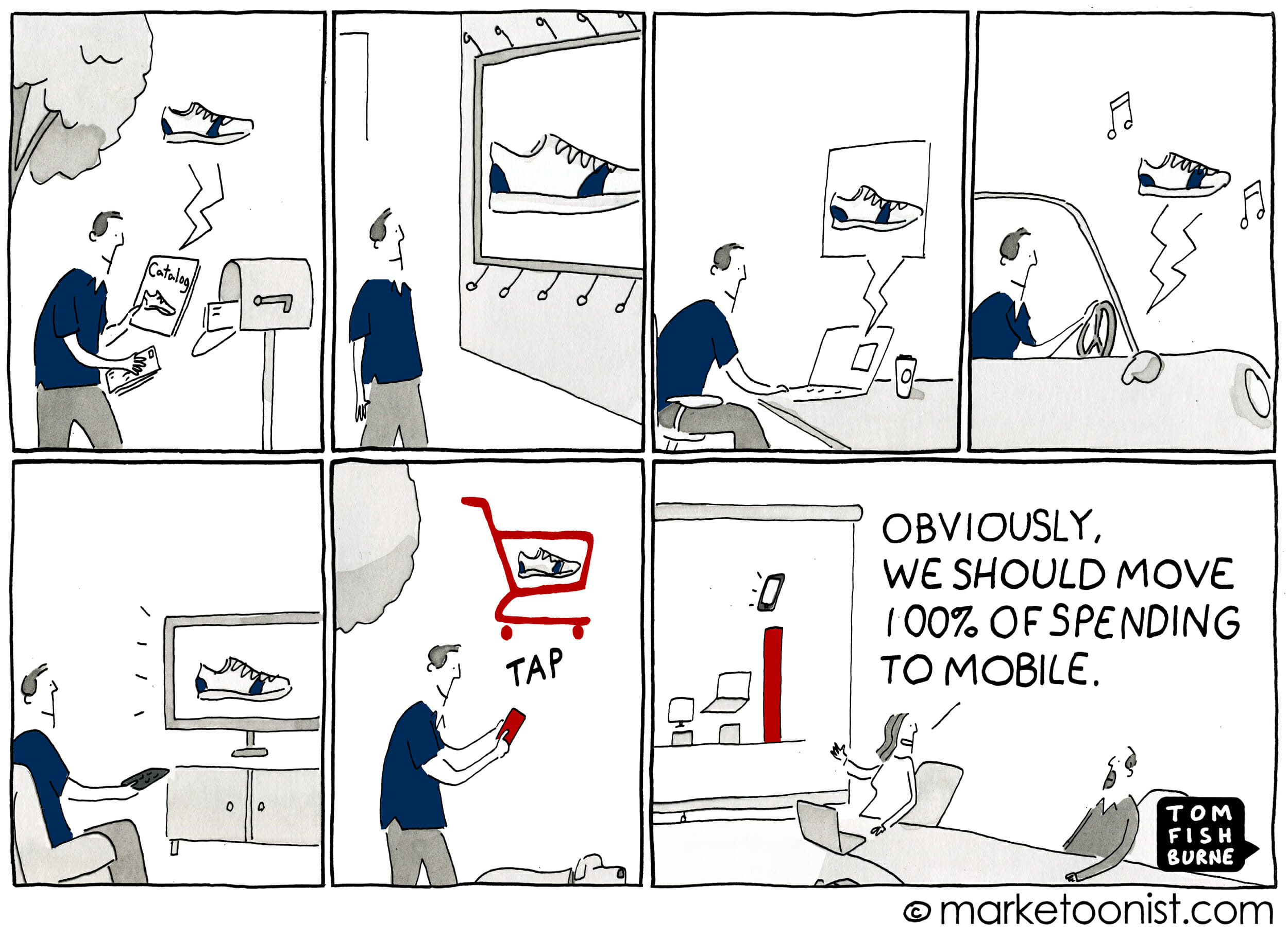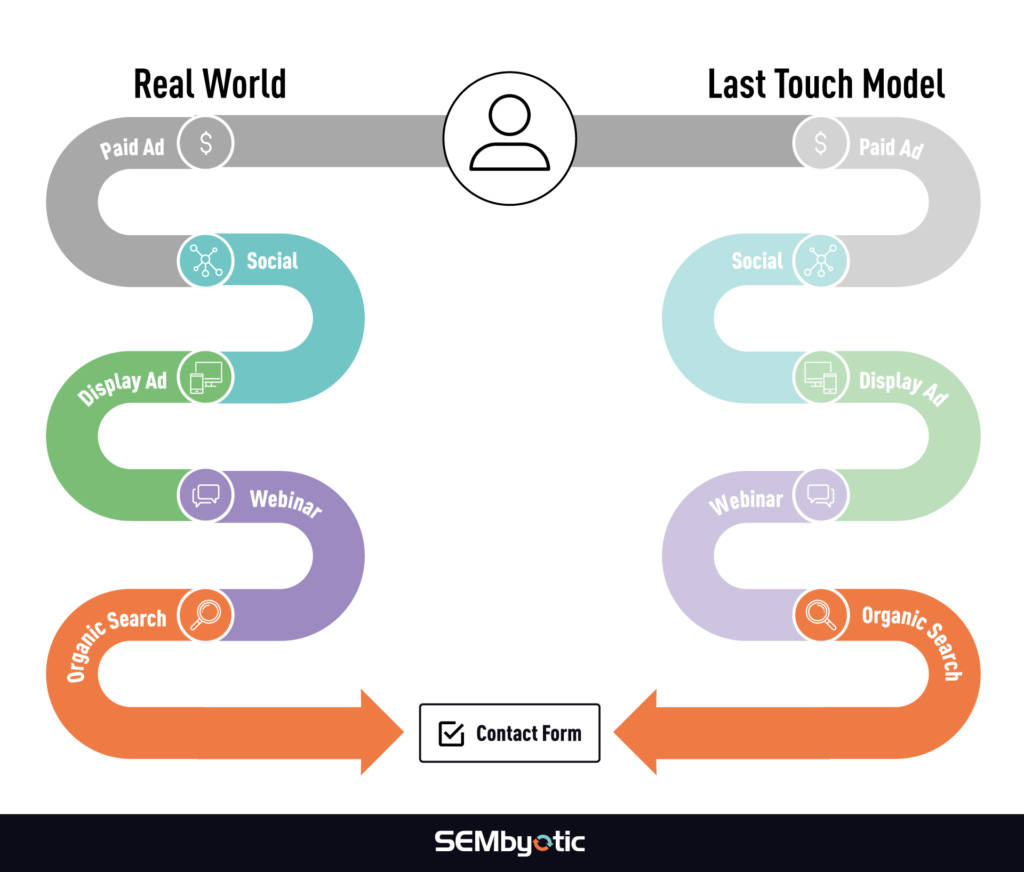
Is Bad Data Influencing Your Digital Marketing Budget?
At some point, you’ve probably heard this B2B marketing truth: “It takes X marketing touches before a prospect will engage”. There are a bunch of different numbers out there depending on which study you read, but I’ve never read one that says: “Prospects will engage the first time they encounter your brand.” To most experienced B2B marketers, the notion of a single-touch lead generation program is laughable in most cases.

I would take the “X marketing touches” adage a step further for B2B by suggesting that it takes a prospect company multiple touches across multiple contacts before they’ll engage. Most B2B marketers understand this. That’s why organizations invest in expensive marketing automation platforms such as Marketo or Hubspot.
If you’re like many companies, your technology mix has a web analytics platform (Google Analytics), a marketing automation platform (Hubspot, Marketo), and a CRM (Salesforce.com [SFDC]). When it comes to deciding which marketing channel is the most successful, how does your organization decide?
Companies often pull an “Opportunities” or leads report in Salesforce.com grouped and sorted by marketing channel to see which sources are responsible for generating the most opportunities.
The problem is, this data can be highly misleading.
The opportunity data in Salesforce is funneled in from your marketing automation platform, and those platforms typically attribute the source marketing channel (e.g. a PPC ad, organic search result, or email communication) in one of two ways:
- The first interaction they had with your company online. Or,
- The last interaction before they completed the form.
More often than not, the data in SFDC is the last interaction because the SFDC integration often doesn’t happen until someone actually completes a form.
What the data in SFDC doesn’t tell you are all the activities that the prospect took BEFORE they filled out that form. There’s a decent chance that they’ve seen your ads, read through your website, saw or engaged with your social media, and maybe even engaged a few other ways before they ever got around to completing your form.
Many companies will see Direct or Organic Search (branded) as a top channel. This is because when the visitor is ready to get serious, they often know exactly where they want to go and they get there by either typing in your URL directly, or searching for your brand within a search engine.
This begs the question; where did all these people hear about your brand?
Chances are, they’ve been looking at your stuff for a while already and when they’re finally ready to raise their hand, it comes through a branded search (they went to Google and typed in your company or product name). The prospect was likely informed of your brand before they became a captured lead within your systems.
If you were to look only at Salesforce.com marketing channel data, your conclusions might be drawn from only the FIRST or LAST actions ONE contact took within the opportunity (depending on your configuration). It wouldn’t show you what happened before the form was completed, what happened with all the other touch points influencing the opportunity, or what happened to nurture the contact after the conversion. First-touch marketing attribution would bias your view of success or failure towards your top-of-funnel activities, while last-touch attribution biases it towards bottom-of-funnel activities.
First- and last-touch marketing attribution are the simplest models to configure in SFDC, which is why it’s common for companies to look at their data in this way. The problem is, the world of digital marketing isn’t simple, and it certainly isn’t single-touch. So why should we assume this is a good way to make major decisions about our digital marketing efforts? If you’re making decisions about budget allocation in this way, you could unwittingly be causing more harm to the very channels in which you were planning to shift your investments.
Consider this common scenario:
A visitor searches for a phrase that triggers your ad and decides to click through to your landing page. The page piques their interest but they choose not to complete the form this time. The visitor returns to Google and searches for your brand name (maybe immediately, maybe not). From there they explore your site and complete a lead generation form for another call to action available on your site.
Let’s break this down:
- The paid ad triggered by a generic key-phrase was likely the first time the visitor became aware of your brand. This is common since paid search is a great way to show ads based on generic key-phrases. They visit your landing page and get the remarketing cookie.
- Later, the prospect sees your remarketing ad on a site somewhere but doesn’t click.
- Instead, the prospect does a Google search for your brand and chooses one of the organic search links.
- After learning more about what you have to offer, the visitor is motivated to complete your form.
Now, think about how your Salesforce.com marketing channel report would show this data:
- The paid landing page didn’t drive the form in this scenario, so no credit goes to the Paid channel.
- The visitor completed the action after an organic branded search. Organic will get the credit for this opportunity using a last-touch model. So let’s reallocate our budgets to Organic, right? Wrong!

PROSPECTS IN THE REAL WORLD SALES FUNNEL WILL GET EXPOSED TO YOUR BRAND MANY TIMES BEFORE COMPLETING YOUR CONTACT FORM, BUT THE ALL-TOO-COMMON LAST-TOUCH ATTRIBUTION MODEL CREDITS THE VERY LAST ACTION WITH 100% OF THE CREDIT.
Without considering the full flow, the natural decision would be to invest more in Organic since Organic was the channel responsible for the opportunity in Salesforce.com. But if the paid ad wasn’t there to introduce your brand, none of this would matter because that visitor wouldn’t be in your sales funnel in the first place. By reducing your investment into the paid channel, you may see organic branded search decline and it might be very difficult to understand why.
To be clear, I’m not suggesting that there is any direct correlation between paid search and organic rankings. Google has been very clear that this is not the case and most independent studies back this up. However, the two are very much connected by way of human behavior and influence. Moz featured the topic of PPC influence over organic search on a Whiteboard Friday episode that is well worth the 8 minutes.
As digital marketers, we like to see data to understand how various mediums influence opportunities. Multi-touch marketing attribution follows the natural behavior of how prospects make purchasing decisions. There are tools to help make sense of multi-touch attribution. Here’s a short list that we’ve compiled:
Multi-touch marketing attribution tools:
BrightFunnel
BrightFunnel‘s marketing attribution software allows you to measure the impact that campaigns, channels, or events have on revenue by assigning credit to all successful marketing touches that help move a buyer down the funnel.
Bizable
Much like BrightFunnel, Bizable‘s marketing attribution tool maps the buyer’s journey and provides a centralized view of all marketing engagements spanning across channels, campaigns, and keywords. Bonus: They have over 15o perfect reviews on the Salesforce App Exchange.
Hive9
Hive9 marketing performance management solutions allow users to select the attribution model that works best for their organization. The tool also provides insights into which marketing activities are generating multiple “waterfall stages.”
Rockerbox
The Rockerbox Attribution Platform boasts of a “simple and affordable multi-touch attribution” that claims to properly allocate attribution across all of your marketing activities and touchpoints.
AttributionApp
Built for B2B marketers with complex sales cycles that use marketing automation natively within Salesforce, AttributionApp allows marketers to marry marketing automation and Salesforce data for easy to use, customizable multi-touch marketing and lead attribution reporting.
Salesforce
In addition to the tools above that can act as a complement to Salesforce, Salesforce provides an overview of marketing attribution models. I’d recommend that you work with your SFDC expert to choose the correct model and data flow for your business. Salesforce has capabilities to capture campaign influence, and while the integration can be more complex, it’s necessary to see a complete picture.
Understand the full picture before making budget decisions.
Successful B2B digital marketing requires a multi-touch approach where each channel plays a role. It’s the entire body of work that drives digital marketing success, not just the first or last interaction. Making important marketing budget decisions based on a first- or last-touch marketing attribution model can actually do more harm than good. If you’re not clear about the origin and accuracy of your data, you could be drawing the wrong conclusions about what works and what doesn’t.